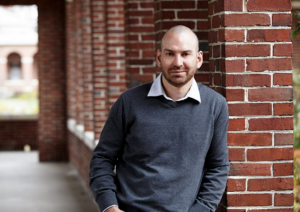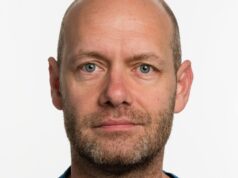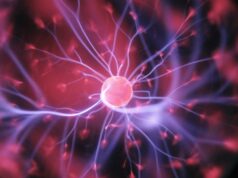
David Putrino has helped innovate a variety of “provocative” technologies within the field of neuromodulation, such as those with the potential to achieve modulatory effects without directly stimulating the brain. Here, he discusses his ongoing research, and details some of the important questions yet to be answered within the context of emerging methods for neuromodulation.
At the end of May this year, I was given the opportunity to travel to Sydney, Australia and participate in the International Neuromodulation Society’s 14th Annual meeting as an invited speaker. Given that the session I was contributing to had a strong focus on innovation, rather than simply discussing some of the same old topics that vex the field of neuromodulation, I wanted my presentation to stand out, and maybe even be a little more on the provocative side.
Coming up with my presentation title turned out to be relatively easy thanks to a little serendipity. About a week before my proposed topic was due, I was trying out a mini-experiment with one of my good friends, Richard “Woody” Wood. Woody is a constant presence at Mount Sinai Hospital and even more so in my lab, the Abilities Research Center. At the hospital, he is employed as an advocate and community leader for people recovering from spinal cord injury. He meets newly injured people in the hospital, gets to know them, helps them to come to terms with their injury and reintegrate back into their lives outside of the hospital. Woody is injured himself, so he can relate to most of our patients on a very fundamental level. He sustained a complete T11 spinal cord injury as a result of a hit and run incident while he was out on his motorcycle one night. He is cheerful, strong and a great leader. He is also always advocating—making sure that the absolute latest in new technologies can be made available for his community.
So late one afternoon, we were in my lab tinkering with some new technology. A company called Not Impossible Labs had just developed some cool technology that applies vibrotactile stimulation to the skin in a highly programmable fashion. We had worked with them to develop some awesome use-cases for the tech such as allowing deaf people to experience live music. Today, we were in the lab with the Director of Technology for the company, Daniel Belquer, to investigate the effects of applying vibrotactile stimulation to the feet of a person (Woody) with spinal cord injury. Giants in the field of spinal cord injury such as Reggie Edgerton out at UCLA have talked about the effects of vibrotactile stimulation to the soles of the feet of people with spinal cord injury for years, but the technological solutions that appear in the space have always been highly cost prohibitive. Here we were standing around with a technology that cost a couple hundred dollars, and we wanted to know if everything we had read about was real, so we strapped the vibro tech to Woody’s feet, loaded up the custom vibrotactile stimulation protocol that Daniel had lovingly named the “Walking Waltz” and we turned on the device. In moments, Woody shouted out in amazement and pointed at his quadriceps. We looked down to see his quads, the quads of a complete T11 injury, bouncing up and down, twitching rhythmically with our vibratory protocol.
Now, we can all argue back and forth until the cows come home about the practical/functional/clinical utility of getting a few quadriceps contractions out of someone with a spinal cord injury by tickling them on the feet. But what requires little justification is the fact that we were likely achieving these muscle contractions via neuromodulation of central pattern generator circuitry. Thus, the title of my presentation was born: in a scientific world that is largely dominated with “top-down” methods of brain and nerve stimulation being viewed as the only way to achieve neuromodulation, we had just turned that paradigm on its head.
As you can imagine, the intent of the presentation was pretty simple from there on in. The intention of the presentation was to show the assembled audience some of the different routes that we had discovered in the Abilities Research Center that showed the potential of different technologies to achieve neuromodulatory effects without directly stimulating the brain. I presented the results of various ongoing lab research efforts such as:
- The ability of virtual reality (VR) content to reduce the intensity of neuropathic pain (potential mechanism: action observation in immersive VR activates somatosensory and motor pathways associated with movement without activating fear and pain pathways, allowing for cortical reorganisation).
- Use of vibrotactile stimulation to curb some of the motor symptoms of Parkinson’s Disease (potential mechanism: somatosensory stimulation of the skin results in ascending volleys of neural activity to the thalamus that disrupts pathological synchrony between the cortex and the basal ganglia).
- Use of binaural beats to reliably entrain different brain rhythms (potential mechanism: rhythmic activity produced by input into the vestibulocochlear nerve is propagated into the brain)
As with conventional forms of neuromodulation, there remains a lot to be thoughtful about when considering these new methods of modulating the nervous system: how do different psychometric properties influence effect size? Which medications augment or dampen the neuromodulatory effect? What constitutes a clinically meaningful result when utilising technologies of this nature?
As the field of neuromodulation continues its pattern of rapid growth, there is no doubt that the scope of the market is also going to increase as scientists and entrepreneurs discover novel and innovative ways of indirectly interacting with the nervous system. Many open questions remain in the field of neuromodulation in general, but the promise of novel treatments emerging for so many new conditions should keep us working hard, conducting the highest quality research in order to make these interventions a reality for our patients.
David Putrino is the Director of Rehabilitation Innovation at Abilities Research Center, Department of Rehabilitation and Human Performance, Icahn School of Medicine at Mount Sinai, New York, USA.










